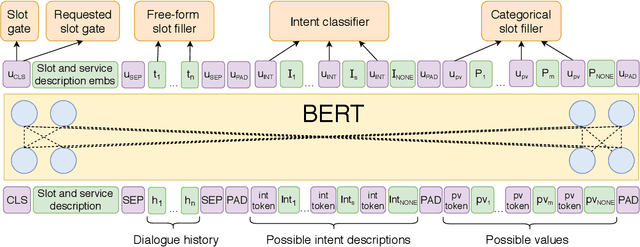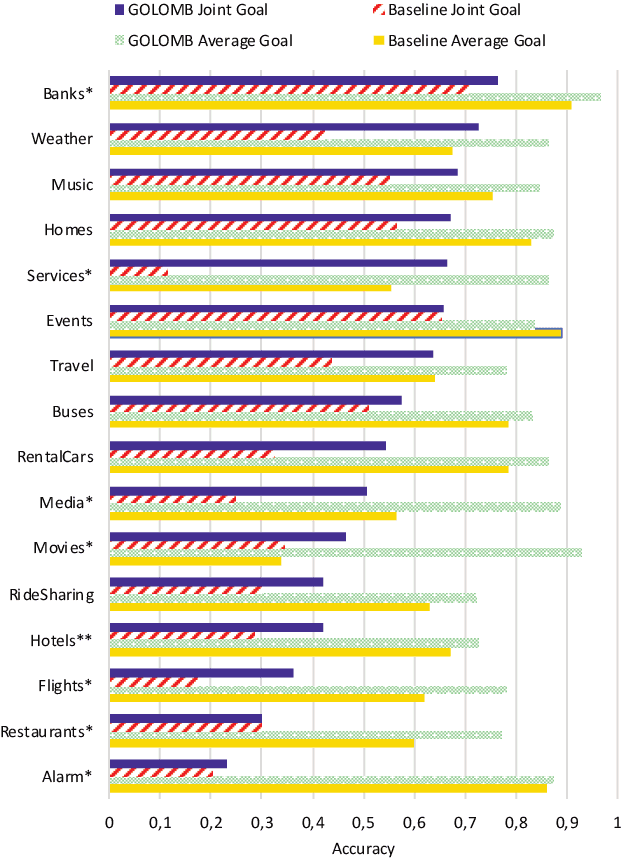Vasily Konovalov
Don't Fight Hallucinations, Use Them: Estimating Image Realism using NLI over Atomic Facts
Mar 20, 2025Abstract:Quantifying the realism of images remains a challenging problem in the field of artificial intelligence. For example, an image of Albert Einstein holding a smartphone violates common-sense because modern smartphone were invented after Einstein's death. We introduce a novel method for assessing image realism using Large Vision-Language Models (LVLMs) and Natural Language Inference (NLI). Our approach is based on the premise that LVLMs may generate hallucinations when confronted with images that defy common sense. Using LVLM to extract atomic facts from these images, we obtain a mix of accurate facts and erroneous hallucinations. We proceed by calculating pairwise entailment scores among these facts, subsequently aggregating these values to yield a singular reality score. This process serves to identify contradictions between genuine facts and hallucinatory elements, signaling the presence of images that violate common sense. Our approach has achieved a new state-of-the-art performance in zero-shot mode on the WHOOPS! dataset.
How Much Knowledge Can You Pack into a LoRA Adapter without Harming LLM?
Feb 20, 2025Abstract:The performance of Large Language Models (LLMs) on many tasks is greatly limited by the knowledge learned during pre-training and stored in the model's parameters. Low-rank adaptation (LoRA) is a popular and efficient training technique for updating or domain-specific adaptation of LLMs. In this study, we investigate how new facts can be incorporated into the LLM using LoRA without compromising the previously learned knowledge. We fine-tuned Llama-3.1-8B-instruct using LoRA with varying amounts of new knowledge. Our experiments have shown that the best results are obtained when the training data contains a mixture of known and new facts. However, this approach is still potentially harmful because the model's performance on external question-answering benchmarks declines after such fine-tuning. When the training data is biased towards certain entities, the model tends to regress to few overrepresented answers. In addition, we found that the model becomes more confident and refuses to provide an answer in only few cases. These findings highlight the potential pitfalls of LoRA-based LLM updates and underscore the importance of training data composition and tuning parameters to balance new knowledge integration and general model capabilities.
DeepPavlov at SemEval-2024 Task 8: Leveraging Transfer Learning for Detecting Boundaries of Machine-Generated Texts
May 17, 2024Abstract:The Multigenerator, Multidomain, and Multilingual Black-Box Machine-Generated Text Detection shared task in the SemEval-2024 competition aims to tackle the problem of misusing collaborative human-AI writing. Although there are a lot of existing detectors of AI content, they are often designed to give a binary answer and thus may not be suitable for more nuanced problem of finding the boundaries between human-written and machine-generated texts, while hybrid human-AI writing becomes more and more popular. In this paper, we address the boundary detection problem. Particularly, we present a pipeline for augmenting data for supervised fine-tuning of DeBERTaV3. We receive new best MAE score, according to the leaderboard of the competition, with this pipeline.
Knowledge Distillation of Russian Language Models with Reduction of Vocabulary
May 04, 2022



Abstract:Today, transformer language models serve as a core component for majority of natural language processing tasks. Industrial application of such models requires minimization of computation time and memory footprint. Knowledge distillation is one of approaches to address this goal. Existing methods in this field are mainly focused on reducing the number of layers or dimension of embeddings/hidden representations. Alternative option is to reduce the number of tokens in vocabulary and therefore the embeddings matrix of the student model. The main problem with vocabulary minimization is mismatch between input sequences and output class distributions of a teacher and a student models. As a result, it is impossible to directly apply KL-based knowledge distillation. We propose two simple yet effective alignment techniques to make knowledge distillation to the students with reduced vocabulary. Evaluation of distilled models on a number of common benchmarks for Russian such as Russian SuperGLUE, SberQuAD, RuSentiment, ParaPhaser, Collection-3 demonstrated that our techniques allow to achieve compression from $17\times$ to $49\times$, while maintaining quality of $1.7\times$ compressed student with the full-sized vocabulary, but reduced number of Transformer layers only. We make our code and distilled models available.
Goal-Oriented Multi-Task BERT-Based Dialogue State Tracker
Feb 05, 2020



Abstract:Dialogue State Tracking (DST) is a core component of virtual assistants such as Alexa or Siri. To accomplish various tasks, these assistants need to support an increasing number of services and APIs. The Schema-Guided State Tracking track of the 8th Dialogue System Technology Challenge highlighted the DST problem for unseen services. The organizers introduced the Schema-Guided Dialogue (SGD) dataset with multi-domain conversations and released a zero-shot dialogue state tracking model. In this work, we propose a GOaL-Oriented Multi-task BERT-based dialogue state tracker (GOLOMB) inspired by architectures for reading comprehension question answering systems. The model "queries" dialogue history with descriptions of slots and services as well as possible values of slots. This allows to transfer slot values in multi-domain dialogues and have a capability to scale to unseen slot types. Our model achieves a joint goal accuracy of 53.97% on the SGD dataset, outperforming the baseline model.
 Add to Chrome
Add to Chrome Add to Firefox
Add to Firefox Add to Edge
Add to Edge